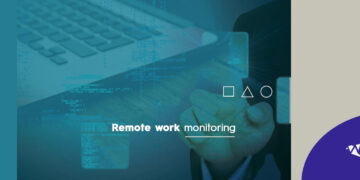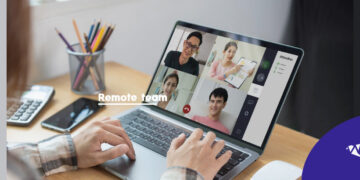Remote work, a trend accelerated by recent global events, has become a staple in the modern workplace. While it offers flexibility and eliminates commuting, it also blurs the lines between professional and personal life. Employers and recruiters who navigate this new terrain must understand the unique challenges and opportunities remote work presents to ensure their teams remain productive, satisfied, and balanced.
In this blog post, we’ll address 9 strategies to help your company navigate work-life balance and enhance the workplace productivity.
Understanding the Unique Challenges of Remote Work
The first step in addressing work-life balance for remote employees lies in recognizing the distinct challenges they face. Without the physical separation of an office, remote workers often struggle with unplugging from work.
The convenience of a home office can quickly transform into a 24/7 work environment, leading to burnout and decreased productivity. Moreover, remote work can lead to feelings of isolation and disconnect from the team, impacting collaboration and morale.
If you want to learn more about remote work, watch this TED talk!
Establishing Clear Boundaries
Clear boundaries are essential for remote work. Employers and recruiters should encourage setting specific work hours and sticking to them.
This approach not only helps in maintaining a routine but also signals to colleagues when an employee is available. Encouraging the use of digital tools that indicate availability can further enhance this boundary-setting. Additionally, physical boundaries within the home, such as a dedicated workspace, can help in mentally separating work from personal life.
Promoting Flexible Scheduling
Flexibility is a key advantage of remote work, and smart employers leverage this to boost morale and productivity. Encouraging employees to work during their most productive hours, even if they deviate from the traditional 9-to-5 schedule, can lead to more efficient and focused work. This flexibility also allows employees to attend to personal matters, reducing stress and improving overall job satisfaction.
Encouraging Regular Breaks and Time Off
Regular breaks throughout the day are vital for remote workers. Short, frequent breaks away from the screen can reduce fatigue and increase productivity. Additionally, employers should emphasize the importance of taking vacation time. Remote workers might hesitate to take time off since they are already home, but disengaging from work is crucial for long-term mental health and work performance.
Fostering a Culture of Communication and Support
Effective communication is the cornerstone of successful remote work. Regular check-ins, whether through video calls or messaging platforms, help maintain a sense of team cohesion. These should not be limited to work-related discussions but should also include opportunities for casual interactions to mimic the social aspects of an office environment.
Moreover, providing mental health resources and support demonstrates a commitment to employee well-being. Employers can offer workshops, access to counseling services, and create an environment where employees feel comfortable discussing their challenges.
Investing in the Right Tools
The right technology makes a significant difference in remote work. Employers and recruiters should ensure their teams have access to effective communication tools, project management software, and secure networks. Training on how to use these tools efficiently can further enhance productivity and reduce frustration.
Leading by Example
Leadership plays a crucial role in setting the tone for work-life balance. When leaders model healthy work habits, such as not sending emails outside of work hours or respecting boundaries, it sets an expectation for the rest of the team. Leaders should be vocal about their own strategies for balancing work and life, offering guidance and setting a precedent.
Encouraging Physical Activity and Ergonomics
Physical well-being is crucial in remote work settings. Employers can encourage regular exercise by organizing virtual fitness challenges or offering gym memberships. Additionally, providing guidance on setting up an ergonomic home office can prevent physical strain and improve comfort during work hours.
Regularly Reviewing and Adapting Strategies
Finally, what works for one team or individual might not work for another. Regularly reviewing work-life balance strategies and soliciting employee feedback is essential. This process allows for the adaptation of policies and practices to meet evolving needs and challenges.
Takeaway
Balancing work and life in a remote setting requires a multifaceted approach. Employers and recruiters play a crucial role in establishing and promoting practices that help employees thrive in this environment.
By understanding the unique challenges of remote work, setting clear boundaries, promoting flexibility, and fostering a supportive culture, you can help your remote team achieve a healthy balance that benefits both the individuals and the company.














